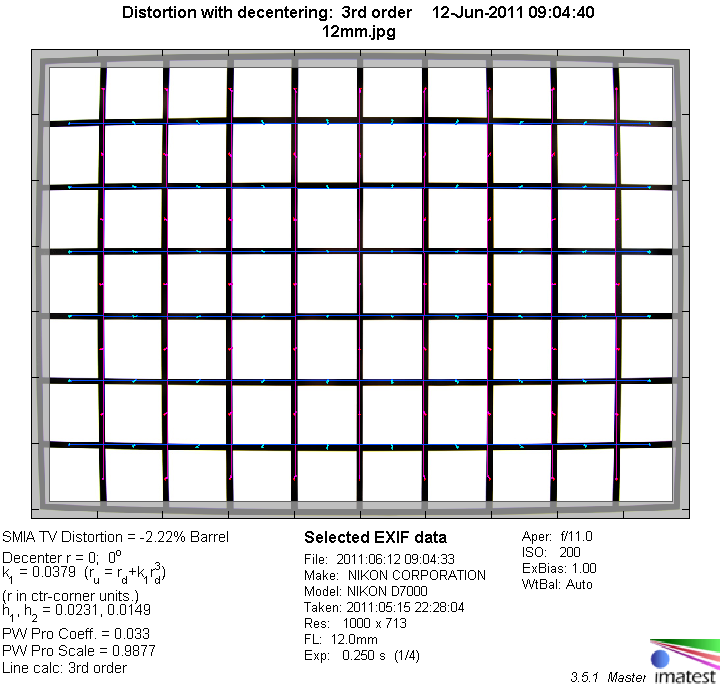|
Page 2 of 3

Distortion
At the shortest focal length the Tokina shows quite pronounced barrel distortion. Zooming in reduces the amount of barrel distortion considerably. At 16mm it is already down to a moderate level. In the upper zoom range, distortion is still measurable, but should not be an issue for most subjects.
|
Move the mouse cursor over the focal length text marks below to observe the respective distortion
|
| 12mm |
16mm |
20mm |
24mm |
|

|
The chart above has a real-world size of about 120x80cm.
Vignetting
Vignetting is quite pronounced at the shortest focal length. The lens should be stopped down to f/8 to avoid visible light fall-off towards the corners. At all other tested focal lengths, vignetting is well controlled.

MTF (resolution)
At the shortest focal length, the lens delivers excellent center resolution straight from the maximum aperture. The borders follow just a small step behind, while the extreme corners produced much lower values at f/4. For best sharpness across the frame, the lens should be stopped down to f/8.
At 16mm, the borders and corners harmonize much better and deliver very good resolution throughout the tested aperture range.
The same is true at 20mm, except for the largest aperture setting. In addition, the image center already shows a tendency towards lower resolution figures.
At 24mm, the center resolution is down to very good figures and no longer reaches excellent sharpness. The borders and corners perform even lower at f/4. However, stopped down to f/8 the lens still is able to deliver very good resolution across the frame.
Please note that the MTF results are not directly comparable across the different systems!
Below is a simplified summary of the formal findings. The chart shows line widths per picture height (LW/PH) which can be taken as a measure for sharpness.
If you want to know more about the MTF50 figures you may check out the corresponding Imatest Explanations

Chromatic Aberrations (CAs)
Uh-oh.
Tokina wide-angle lenses have a reputation of producing a bit more CAs (color shadows at harsh contrast transitions) than average. Still, the amount of CAs shown by the AT-X 12-24 II surprises nonetheless.
Note that CAs can be corrected in software or by the camera itself (most modern Nikon DSLRs remove CAs themselves if you shoot JPGs). However, with values that high, CAs will have an influence on perceived sharpness, even if the colour cast at contrast edges can be easily removed.

|